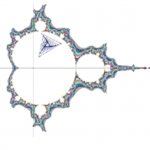The history of Aguilonius started in 2007 with Derek De Brandt and Marcus Peeraer combining technical, programming, business and content skills. Ever since the foundation of Aguilonius, other experts in the domain of regulatory reporting have been joining the team.
About Franciscus Aguilonius (1567 – 1617)
 Franciscus Aguilonius or François de Aguilón was born on January 4th, 1567 in Brussels. He joined the Jesuit society in 1586 at the age of 19 and developed into a mathematician, physicist and architect.
Franciscus Aguilonius or François de Aguilón was born on January 4th, 1567 in Brussels. He joined the Jesuit society in 1586 at the age of 19 and developed into a mathematician, physicist and architect.
After years of study, he started a special school of mathematics at Antwerp in 1611 to continue the mathematical research and study in the Jesuit society. This school produced geometers like André Tacquet and Jean-Charles de la Faille.
F. Aguilonius wrote the optics cornerstone scientific work ‘Opticorum libri sex philosophis juxta ac mathematicis utiles’ with beautiful illustrations by his friend Pieter Paul Rubens.
The Mandelbrot fractal
 The logo of Aguilonius contains a two-dimensional drawing and looks like the ground floor plan of a cathedral. However, it’s the result of the rendering in the complex plane of a mathematical set of points which is derived and named after the Julia sets.
The logo of Aguilonius contains a two-dimensional drawing and looks like the ground floor plan of a cathedral. However, it’s the result of the rendering in the complex plane of a mathematical set of points which is derived and named after the Julia sets.
The Mandelbrot is the set of values of c in the complex plane for which the orbit of 0 under iteration of the complex quadratic polynomial zn+1 = zn2 + c remains bounded. That is, a complex number c is part of the Mandelbrot set if, when starting with z0 = 0 and applying the iteration repeatedly, the absolute value of zn remains bounded however large n gets.
The astonishing rendering result is called a fractal. A term which is used to describe a mathematical algorithm that brings order out of what appears to be chaos, but is the result of a complex and mathematically describable algorithm.
